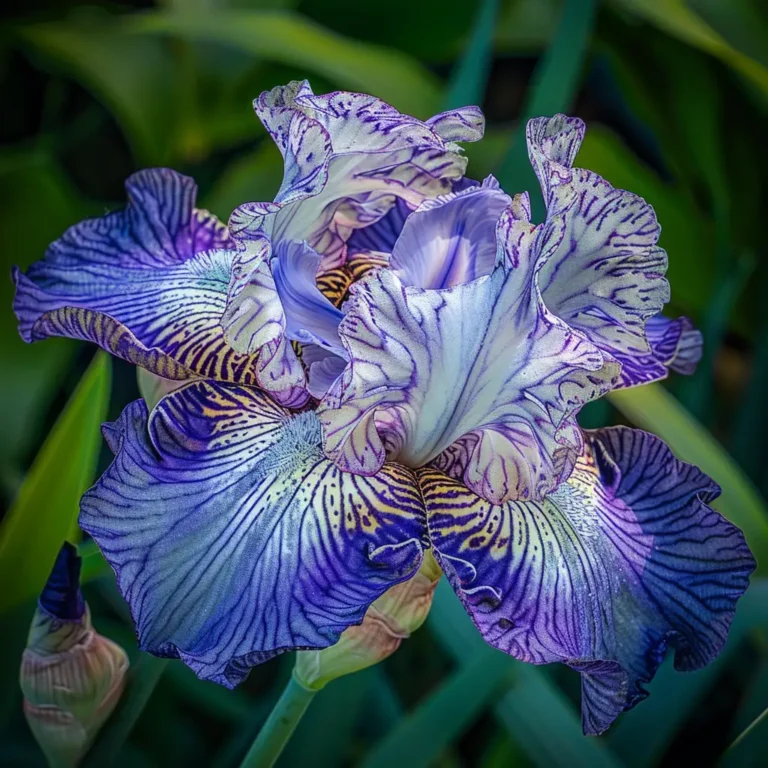The Japanese Iris (Iris ensata) is a stunning and elegant plant, cherished in gardens worldwide for its striking flowers and lush foliage. This guide will provide you with all the information you need to grow and care for these beautiful irises, ensuring your garden flourishes with their unique charm.
Introduction to Japanese Iris (Iris ensata)
The Japanese Iris, known scientifically as Iris ensata, is a beloved ornamental plant that adds beauty and elegance to any garden. Its historical significance in Japanese culture and its adaptability make it a popular choice among gardeners.
Botanical Description
The Japanese Iris is notable for its large, vibrant blooms and sword-like foliage. Here’s a closer look at its key characteristics:
- Leaves: Long, narrow, and sword-like, adding a vertical element to garden designs.
- Flowers: Large, showy blooms in a variety of colors including purple, blue, and white.
- Roots: Rhizomatous, which allows them to spread and establish well in suitable conditions.
Iris ensata plants typically grow to a height of 2 to 4 feet, making them a striking addition to garden borders and water features.
Varieties of Japanese Iris
There are numerous cultivars of Japanese Iris, each offering unique colors and patterns. Some popular varieties include:
- Variegata: Known for its striking variegated foliage.
- Silverband: Features unique silver-edged leaves.
These varieties not only add color but also texture to garden landscapes.
Planting Japanese Iris
To ensure the best growth, Japanese Iris should be planted in the right conditions:
- Soil: Prefers acidic, well-drained soil. Adding organic matter can enhance soil quality.
- Planting Techniques: Plant rhizomes just below the soil surface, ensuring good contact with the soil.
- Best Time for Planting: Spring or early fall, allowing roots to establish before extreme temperatures.
Watering and Feeding
Proper watering and feeding are crucial for the healthy growth of Japanese Iris:
- Watering Requirements: Keep the soil consistently moist, especially during the growing season.
- Fertilization Tips: Use a balanced fertilizer in early spring and mid-summer to promote healthy growth.
- Common Nutrient Deficiencies: Look out for yellowing leaves which can indicate a lack of nitrogen.
Pruning and Maintenance
Regular pruning and maintenance keep your Japanese Iris healthy and vibrant:
- Pruning Methods: Remove spent blooms and cut back foliage in late fall to prevent disease.
- Seasonal Maintenance Tasks: Mulch in winter to protect roots from frost.
- Pests and Diseases Management: Monitor for common pests like aphids and treat with insecticidal soap if necessary.
Propagation Methods
Japanese Iris can be propagated through various methods:
- Division: The most common method, done in early spring or fall.
- Seed Propagation: Requires stratification and is less common due to its longer process.
- Tissue Culture: Used by nurseries for large-scale production.
Landscaping Uses
Japanese Iris is a versatile plant that enhances garden aesthetics:
- Ornamental Uses: Ideal for borders, water gardens, and as a focal point in garden designs.
- Companion Plants: Pairs well with hostas, daylilies, and ferns.
- Designing with Japanese Iris: Use in groups for a dramatic effect or as an accent plant in mixed borders.
FAQs about Japanese Iris
Here are some common questions and answers about Japanese Iris:
- What is the best time to plant Japanese Iris? Early spring or fall is ideal for planting.
- How do you care for Japanese Iris in winter? Mulch heavily and cut back foliage to protect the plant from frost.
- Can Japanese Iris grow in containers? Yes, as long as they are kept moist and have adequate drainage.
Conclusion
Japanese Iris (Iris ensata) offers unmatched beauty and elegance to gardens. With proper care, these irises can thrive and provide stunning visual interest year after year. By following the guidelines outlined in this guide, you can enjoy the splendor of Japanese Iris in your garden.

